The Hazard Communication Standard (HazCom) and GHS Standard Training equips healthcare providers with essential knowledge of OSHA’s HazCom requirements. Providers learn to classify hazardous chemicals using the Globally Harmonized System (GHS), interpret GHS criteria and pictograms, and understand Safety Data Sheet (SDS) formats. This training also teaches proper handling of hazardous chemicals, effective hazard communication, and appropriate spill response actions. By mastering these skills, healthcare providers can ensure workplace safety, protect staff and patients, and comply with regulatory standards.
What You Will Learn:
- Globally Harmonized System (GHS) for classification of chemicals
- GHS criteria for recognizing hazardous chemicals
- Format of Safety Data Sheets (SDS)
- Meaning of GHS pictograms
- Proper procedures for handling hazardous chemicals safely
- Communicating chemical hazards to workers
- Appropriate response actions in the event of chemical spills
Details:
Course length: 45 minutes; CME: 0.75
Languages: American English
Key features: Audio narration, learning activity, and post-assessment.
American Medical Compliance is accredited by the Accreditation Council for Continuing Medical Education (ACCME) to provide continuing medical education to physicians. Our Continuing Medical Education (CME) program is committed to enhancing the knowledge, skills, and professional performance of healthcare providers to improve patient care outcomes. Through high-quality educational activities, we aim to address the identified educational gaps and to support the continuous professional development of our medical community. American Medical Compliance designates this activity for a maximum of 0.75 AMA PRA Category 1 Credits. Physicians should only claim this credit for their complete participation in this activity.
Get Certified
American Medical Compliance (AMC) is a leader in the industry for compliance, Billing, and HR solutions. To become certified, please visit us at: American Medical Compliance (AMC).
Reach out for other courses by visiting the AMC Course Library.
Introduction to OSHA's Hazard Communication (HazCom) Standard
Based on the precept that chemicals in the workplace should carry clear labels and easy-to-understand information about their hazards, OSHA’s Hazard Communication Standard provides a standardized approach to workplace hazard communications associated with exposure to hazardous chemicals.
Relationship Between HazCom and GHS
Global Harmonization and the Hazard Communication Standard focuses on recent changes to the Hazard Communication Standard (HazCom) OSHA’s regulation that ensures that employees who work with chemicals are trained in their safe handling and use to recognize symptoms of adverse health effects related to exposure and to take appropriate measures in an emergency.
This course teaches healthcare providers to identify and manage workplace chemical hazards. OSHA’s HazCom standard requires clear labels and standardized safety information. In this training, providers will learn about updates like the Global Harmonization System (GHS) for better hazard classification. Providers learn safe handling, risk recognition, and emergency response. By applying these skills, they improve workplace safety, protect staff and patients, and ensure OSHA compliance.
Understanding Chemical Hazards in the Workplace
OSHA’s Hazard Communication Standard (HCS) is designed to:
- Protect against chemical-source injuries and illnesses by ensuring that employers and workers are provided with sufficient information to anticipate, recognize, evaluate, and control chemical hazards and take appropriate protective measures. This information is provided through safety data sheets (SDSs), labels, and employee training.
- In order for SDSs, labels, and training to be effective, the hazard information they convey must be complete and accurate.
- Thus, it is critically important to obtain comprehensive and correct information about the hazards associated with particular chemicals.
This course teaches healthcare providers to identify and control chemical hazards. OSHA requires employers to provide accurate safety data sheets (SDSs), labels, and training to prevent chemical-related injuries. This course stresses the need for complete hazard information to ensure safety. Providers learn to recognize risks, evaluate hazards, and apply protective measures to maintain workplace safety and OSHA compliance.
GHS Labeling Requirements Under HazCom
OSHA has adopted new hazardous chemical labeling requirements as a part of its recent revision of the Hazard Communication Standard, 29 CFR 1910.1200 (HCS), bringing it into alignment with the United Nations’ Globally Harmonized System of Classification and Labelling of Chemicals (GHS).
These changes will help ensure improved quality and consistency in the classification and labeling of all chemicals, and will also enhance worker comprehension. As a result, workers will have better information available on the safe handling and use of hazardous chemicals, thereby allowing them to avoid injuries and illnesses related to exposures to hazardous chemicals.
Employers are responsible for maintaining the labels on the containers, including, but not limited to, tanks, totes, and drums. This means that labels must be maintained on chemicals in a manner which continues to be legible and the pertinent information (such as the hazards and directions for use) does not get defaced (i.e., fade, get washed off) or removed in any way.
This training teaches healthcare providers to apply OSHA’s updated chemical labeling rules under the Globally Harmonized System (GHS). These changes improve classification and worker safety. Providers learn to identify hazards, interpret labels, and prevent exposure injuries. Employers must keep labels legible on containers and relabel if damaged. This training ensures OSHA compliance and a safer workplace.
Safety Data Sheets (SDS) Under HazCom
The Hazard Communication Standard (HCS) (29 CFR 1910.1200(g)), revised in 2012, requires that the chemical manufacturer, distributor, or importer provide Safety Data Sheets (SDSs) (formerly MSDSs or Material Safety Data Sheets) for each hazardous chemical to downstream users to communicate information on these hazards.
The information contained in the SDS is largely the same as the MSDS, except now the SDSs are required to be presented in a consistent user-friendly, 16-section format.
The SDS includes:
- Information such as the properties of each chemical
- The physical, health, and environmental health hazards
- Protective measures; and safety precautions for handling, storing, and transporting the chemical
In sum, this course teaches healthcare providers to interpret Safety Data Sheets (SDSs) under OSHA’s regulations. Manufacturers, distributors, and importers must provide SDSs in a standardized 16-section format. Providers learn to identify chemical properties, health risks, protective measures, and safe handling. This training ensures safe chemical management and OSHA compliance.



